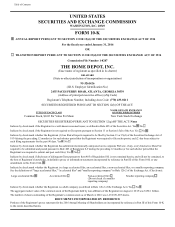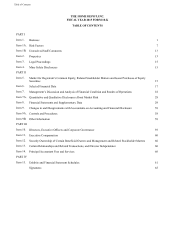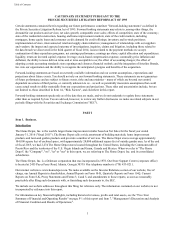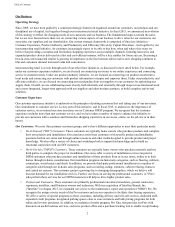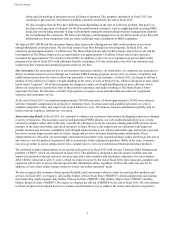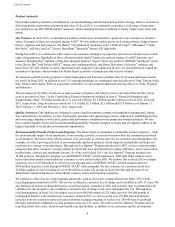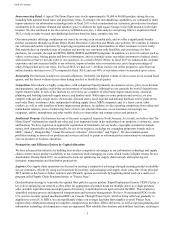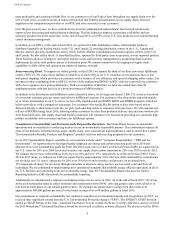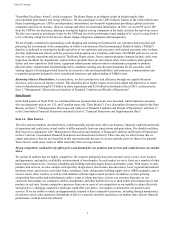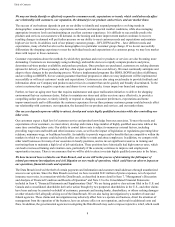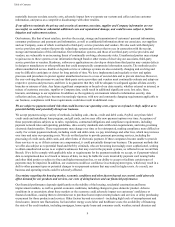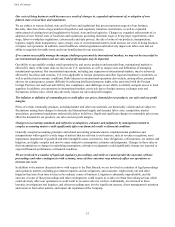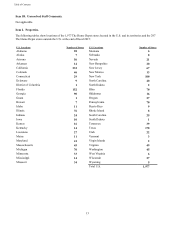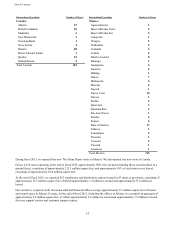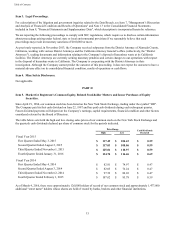Home Depot 2015 Annual Report Download - page 7
Download and view the complete annual report
Please find page 7 of the 2015 Home Depot annual report below. You can navigate through the pages in the report by either clicking on the pages listed below, or by using the keyword search tool below to find specific information within the annual report.Table of Contents
5
Interconnecting Retail. A typical The Home Depot store stocks approximately 30,000 to 40,000 products during the year,
including both national brand name and proprietary items. To enhance our merchandising capabilities, we continued to make
improvements to our information technology tools in fiscal 2015 to better understand our customers, provide more localized
assortments to fit customer demand and optimize space to dedicate the right square footage to the right products in the right
location. We also continued to use the resources of BlackLocus, Inc., a data analytics and pricing firm we acquired in fiscal
2012, to help us make focused merchandising decisions based on large, complex data sets.
Our online product offerings complement our stores by serving as an extended aisle, and we offer a significantly broader
product assortment through our Home Depot, Home Decorators Collection and Blinds.com websites. We continue to enhance
our websites and mobile experience by improving navigation and search functionalities to allow customers to more easily
find and purchase an expanded array of products and provide our customers with flexibility and convenience for their
purchases, for example, through our BOPIS, BOSS, BORIS and BODFS programs. In addition, we invest in content, such as
videos, room scenes, buying guides and how-to information, and we routinely assess our online assortment to balance choice
with curation so that we provide value to our customers. As a result of these efforts, in fiscal 2015 we enhanced the customer
experience and saw increased traffic to our websites, improved online sales conversion rates, and a larger percentage of
orders being picked up in our stores. For fiscal 2015, we had over 1.4 billion visits to our online properties; sales from our
online channels increased over 25% compared to fiscal 2014; and over 40% of our online orders were picked up in a store.
Seasonality. Our business is subject to seasonal influences. Generally, our highest volume of sales occurs in our second fiscal
quarter, and the lowest volume occurs either during our first or fourth fiscal quarter.
Competition. Our industry is highly competitive, with competition based primarily on customer service, price, store location
and appearance, and quality, availability and assortment of merchandise. Although we are currently the world’s largest home
improvement retailer, in each of the markets we serve there are a number of other home improvement stores, electrical,
plumbing and building materials supply houses, and lumber yards. With respect to some products and services, we also
compete with specialty design stores, showrooms, discount stores, local, regional and national hardware stores, paint stores,
mail order firms, warehouse clubs, independent building supply stores, MRO companies and, to a lesser extent, other
retailers, as well as with installers of home improvement products. In addition, we face growing competition from online and
multichannel retailers, some of whom may have a lower cost structure than ours, as our customers increasingly use
computers, tablets, smartphones and other mobile devices to shop online and compare prices and products.
Intellectual Property. Our business has one of the most recognized brands in North America. As a result, we believe that The
Home Depot® trademark has significant value and is an important factor in the marketing of our products, e-commerce, stores
and business. We have registered or applied for registration of trademarks, service marks, copyrights and internet domain
names, both domestically and internationally, for use in our business, including our expanding proprietary brands such as
HDX®, Husky®, Hampton Bay®, Home Decorators Collection®, Glacier Bay® and Vigoro®. We also maintain patent
portfolios relating to some of our products and services and seek to patent or otherwise protect innovations we incorporate
into our products or business operations.
Productivity and Efficiency Driven by Capital Allocation
We have advanced this initiative by building best-in-class competitive advantages in our information technology and supply
chain to better ensure product availability to our customers while managing our costs, which results in higher returns for our
shareholders. During fiscal 2015, we continued to focus on optimizing our supply chain network and improving our
inventory, transportation and distribution productivity.
Logistics. Our supply chain operations are focused on creating a competitive advantage through ensuring product availability
for our customers, effectively using our investment in inventory, and managing total supply chain costs. One of our principal
2015 initiatives has been to further optimize and efficiently operate our network by beginning initial work on a multi-year
program called Supply Chain Synchronization, or "Project Sync".
Our distribution strategy is to provide the optimal flow path for a given product. Rapid Deployment Centers ("RDCs") play a
key role in optimizing our network as they allow for aggregation of product needs for multiple stores to a single purchase
order and then rapid allocation and deployment of inventory to individual stores upon arrival at the RDC. This results in a
simplified ordering process and improved transportation and inventory management. We have 18 mechanized RDCs in the
U.S. and two recently opened mechanized RDCs in Canada. Through Project Sync, which is being rolled out gradually to
suppliers in several U.S. RDCs, we can significantly reduce our average lead time from supplier to shelf. Project Sync
requires deep collaboration among our suppliers, transportation providers, RDCs and stores, as well as rigorous planning and
information technology development to create an engineered flow schedule that shortens and stabilizes lead time, resulting in

